
St. Joe's mascot, "WolfGang." (Photo by Darren Andrew Weimert)

St. Joe's mascot, "WolfGang." (Photo by Darren Andrew Weimert)
From high school gymnasiums to college football stadiums to professional sports venues, team mascots have become a beloved part of the spectator experience, bringing entertainment and a sense of team spirit to all kinds of sporting events.
But the significance of a team mascot goes far beyond their crowd-pleasing sideline antics. While players come and go, and while some seasons are more successful than others, what remains consistent about a team through the years is its identity: its location, its name, its colors, and yes, its mascot.
So it is perhaps understandable that one local community has gone through some strife as it grappled with making changes to its team name and mascot after years of controversy.
Earlier this year, Bellefonte Area School District officially voted to change its team name from “Red Raiders” to “Raiders” and to eliminate all use of Native American imagery. The votes came after vigorous debate between those who thought the name and imagery were insensitive and racist, and those who felt the tradition honored Native Americans and was an important part of community identity.
To inform the debate, local historians documented the history of the Bellefonte mascot in detail, a summary of which is now available on the school district’s website (basd.net). But most local mascot history is surprisingly undocumented, having been passed on largely anecdotally and informally from year to year. So a deeper look into the traditions of local mascots took a little detective work, involving delving into old yearbooks and newspapers, as well as talking to school district officials, local historians, and current and former mascots.
Bellefonte Raiders
Back in the 1920s, it was unusual for a high school team to have a formal moniker. Often, nicknames were bestowed upon teams by local sportswriters. According to the BASD website, the Bellefonte football team was nicknamed the “Red and Whites” by a Centre Daily Times sportswriter, and was sometimes referred to as the “Millerites” or the “Bellmen” based on its coaches’ names. Through the mid-1930s, yearbooks and newspapers referred to the team as Cheetahs, Governors, and Red and White Warriors.
The “Red Raiders” name first appeared in the CDT in 1935, and was used by the school in LaBelle, the yearbook, in 1936. At the time, the name referred to the color of the football team’s uniforms, but in 1938, the student newspaper tied the name to Native Americans, when it referred to the school as “Home of Bellefonte’s Fighting Indians, the Red Raiders.”
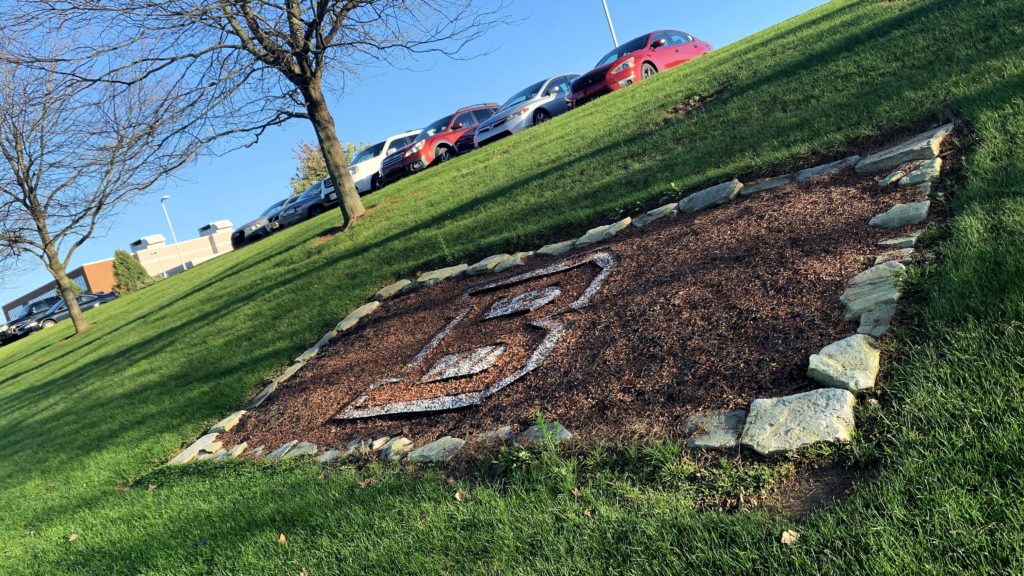
The school embraced the Native American imagery, adopting “Chief Okocho” as a mascot in 1984, portrayed by a typical modern mascot costume complete with a cartoonish large head wearing a headdress. By the 1990s, the mascot suit was phased out due to the perceived insensitivity of its portrayal of Native Americans, although students continued to perform in war paint and Native American dress after the suit was retired. A block letter “B” became the primary athletic logo in 2015, although the Native American imagery was maintained as a secondary logo until the school board voted to eliminate it this year, followed by a vote to eliminate the word “Red” from the team name.
Currently, a rebranding committee made up of students, teachers, administrators, and community members has been charged with coming up with new ways to represent the Raiders. According to Superintendent Tammie Burnaford, the committee is set to present their ideas to the school board by November 4.
State College Little Lions
Of course, the “Little Lions” moniker pays homage to the university at the heart of State College, so the histories of the mascots for both Penn State and the school district are closely intertwined.
The mascot for both teams is based on the eastern mountain lions who roamed nearby Mount Nittany until the 1880s. Penn State officially adopted the Nittany Lion as its mascot in 1907. Newspaper reports from as early as 1926 refer to the State College football team as the “Little Lions,” but it unclear when this nickname became official.
At Penn State, people started dressing officially and regularly in a Nittany Lion costume in 1939. Several State High alumni recall students performing as the Little Lion as far back as the mid-1950s. Photos of cheerleaders dressed in a simple lion costume began appearing in the yearbook (which changed its name from Maroon and Gray to Little Lion in 1958) in the early 1960s.
In the 1970s, the Little Lion mascot became a regular role on the cheerleading squad. The costume was basically a hooded body suit, with the wearer sometimes painting whiskers on his or her face.
By the 1980s, the costume evolved into something more closely resembling the Nittany Lion suit in the 1980s, complete with a detachable head. In fact, according to Jenny Lee, a special education teacher at State High who performed as the mascot for 15 years, the head for her costume was made by the same person who made the head for the Nittany Lion costume.
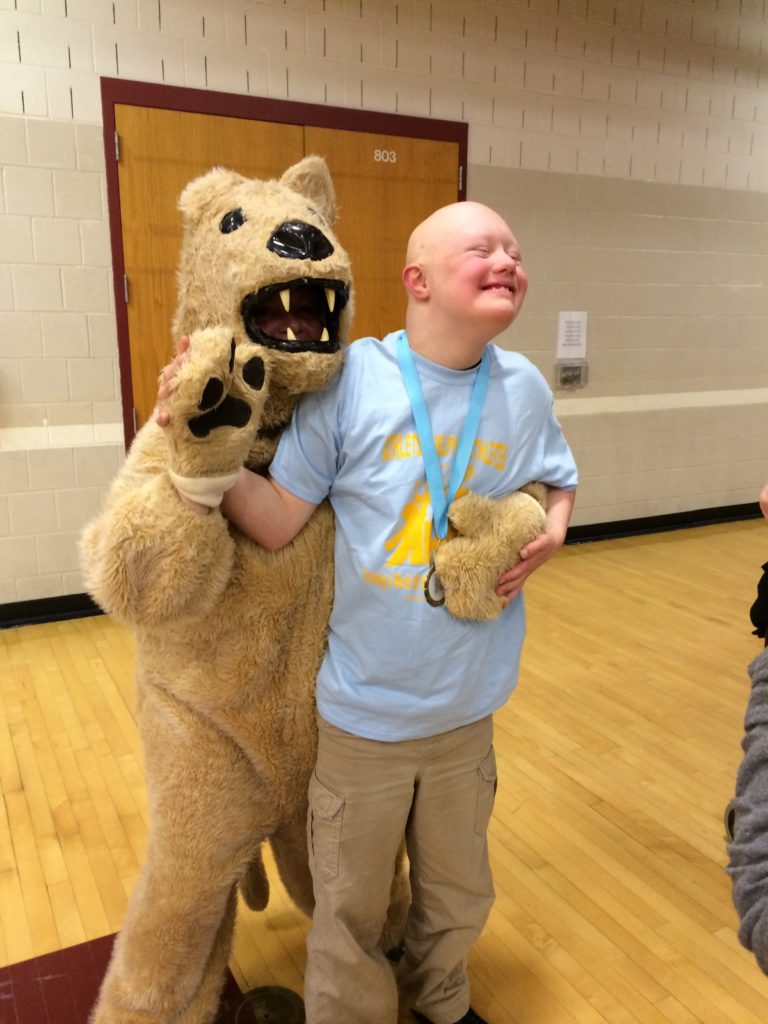
“The head is formed around a football helmet,” she says. “It’s very, very heavy.”
Lee took on the role of mascot at the request of Ron Pavlechko, the former athletic director and football coach.
“Coach Pav said to me, ‘You know, you’re crazy enough. Would you be the lion mascot?’ And I said, ‘Why not? I like to have fun,’” she says.
But beyond having fun, Lee says serving as the Little Lion was one way to support some of her students with disabilities.
“I had students in the marching band, and this was a really good way for me to assist them or be near them and make sure they were OK without them having their ‘teacher’ hover over them in the stands,” she explains.
The job requires a lot of physical stamina, says Lee, who also worked as an aerobics instructor for 20 years. Each year, she would train students to perform as the Little Lion as well. They would often take over for her during the second half of football games and at other events, and she says several of them went on to become their college mascots, with one going on to perform as Ike, the mascot of the State College Spikes.
Lee retired from the school district in 2019, but she looks back fondly at her years as the mascot.
“It was a great way to involve myself and my students in the school community and to give back to the community at large, to make people smile and laugh and cheer. That’ll fill your heart cup, you know?” she says.
State College has not yet replaced Lee with a new mascot, but Athletic Director Chris Weakland says, “We hope to bring the Little Lion out of hibernation soon.”
Philipsburg-Osceola Mounties
Philipsburg’s “Mountaineer” nickname goes back to at least the mid-1930s, when it started to appear in Altoona Tribune sports pages. The school kept its nickname when it merged with Osceola in 1954, although it became commonly shortened to “Mounties.”
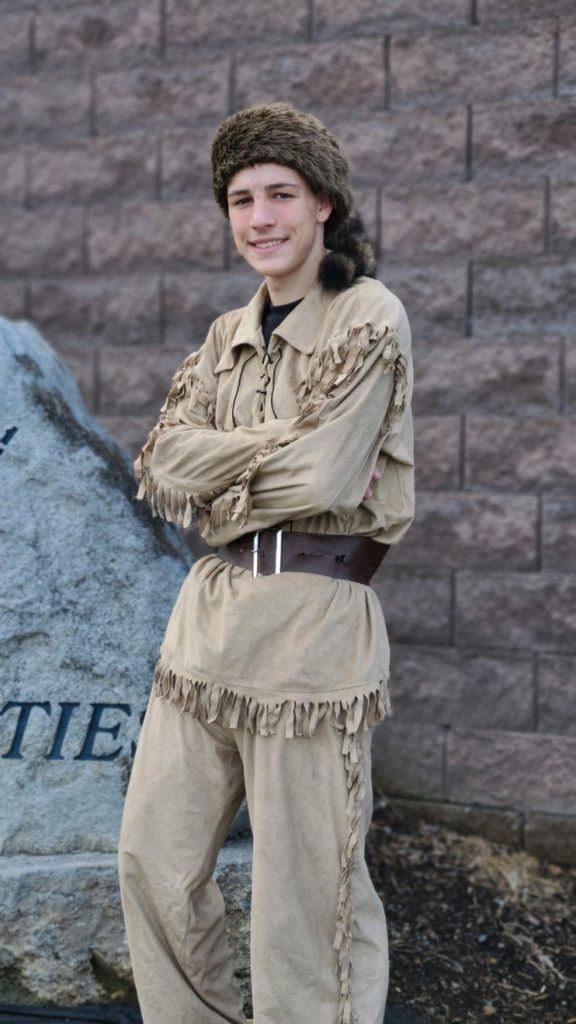
The mascot has generally been depicted neither as a typical “mountaineer” hillbilly persona, nor as a typical Canadian “Mountie” on horseback. Rather, according to Mary Slogosky, Philipsburg-Osceola’s head cheerleading coach, “It’s more of a pioneer, Davy Crockett-type looking guy.”
Mountaineer yearbooks from the early 1980s show the mascot portrayed by young ladies dressed in checkered shirts, vests, shorts, and saddle shoes, carrying a large rifle. But for at least the last 30 years, which is as long as the mascot has come under Slogosky’s purview, the mascot has worn a coon-skin hat and fringed rawhide jacket and pants. The rifle has been phased out.
Slogosky says she used to sew the mascot uniforms by hand, but, “Amazon has changed everything. The ones you see now are actually pioneer costumes that I purchased from a Halloween costume store.”
Slogosky says she sometimes has two mascots at a time, and for the most part their appearances are limited to football season. Philipsburg-Osceola senior Scotty Frantz says he first got involved because his sister was a cheerleader, and he has been portraying the Mountaineer in some way since he served as a junior mascot of sorts in seventh grade.
Unlike many mascots who communicate with the crowd almost solely via body language due to their covered faces and constricting costumes, the Mountie uniform allows the mascot freedom of movement and the ability to talk, so Frantz interacts with the cheerleaders on the sidelines, leading the crowd through a megaphone from the top of a stunt, or running the Mountaineer flag around the track following a touchdown.
“It’s exciting,” he says. “Being kind of the exclusive person to go to the games, be in a costume, and not look like anyone else, is really, really fun.”
Penns Valley Rams
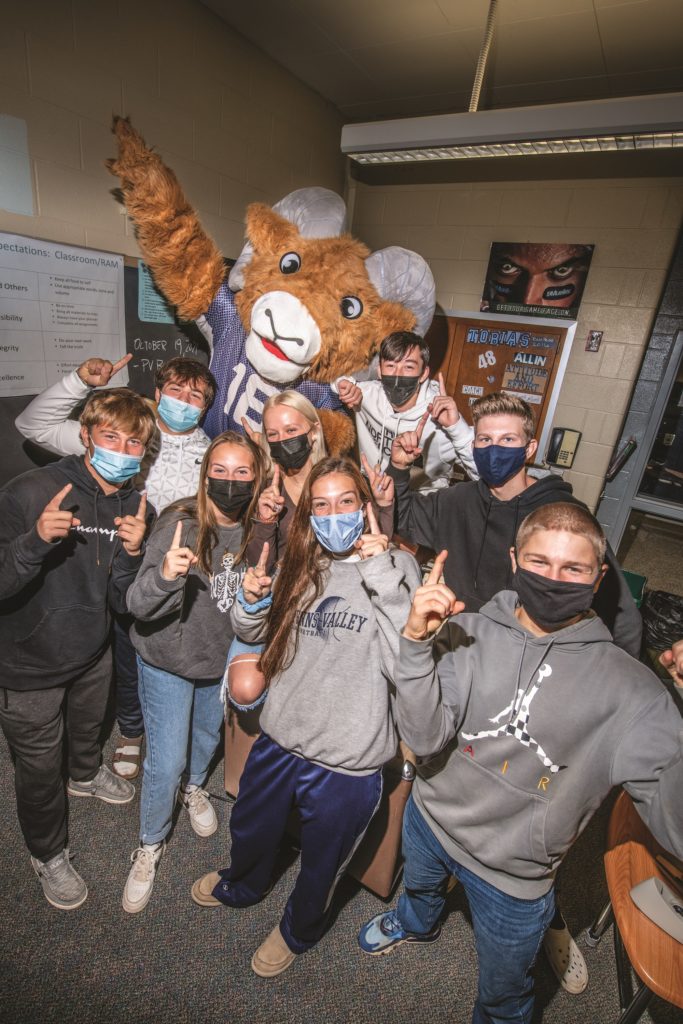
Nate Althouse, the athletic and communications director, shared this history of the Penns Valley Rams:
“In 1952, the students from Centre Hall, East Penns Valley, Spring Mills, and Miles Township became part of the newly-formed Penns Valley Area School District. They would soon become classmates at the new Penns Valley Area High School. Before they moved into their new digs, they would need an alma mater and a mascot. Teachers William Spang and Margaret Bierly wrote the alma mater. The student councils from each school got together to create a contest to select the new name. After establishing a short list of five possible mascots, the entire student body voted on a name, and the Rams won out.”
A live ram was sometimes brought to sporting events in the early days.
Old newspaper clippings from 1975 show a human Ram mascot attired in a white fuzzy costume, her head covered only in a football helmet. Based on old yearbook photos, the costume evolved in the mid-1980s, including a large Muppet-style horned head.
Currently, there is no student regularly portraying the mascot, which is affectionately known as “Bo,” although Althouse says the Ram does occasionally make appearances at special events.
“Part of the reason we have difficulty filling it full-time is that the temperature inside the ‘Bo’ costume rivals that of the surface of Venus,” Althouse jokes, but he says fans can possibly expect some more Bo sightings this school year as the weather turns colder.
Bald Eagle Area Eagles
The choice of the eagle as a mascot for Bald Eagle Area schools sounds obvious, but the name was actually chosen in 1953 by the senior class of what was then Howard High School. At the time, the district was in the process of combining the schools in Port Matilda, Howard, Worth Township, and Snow Shoe, and held a contest to name the new high school.
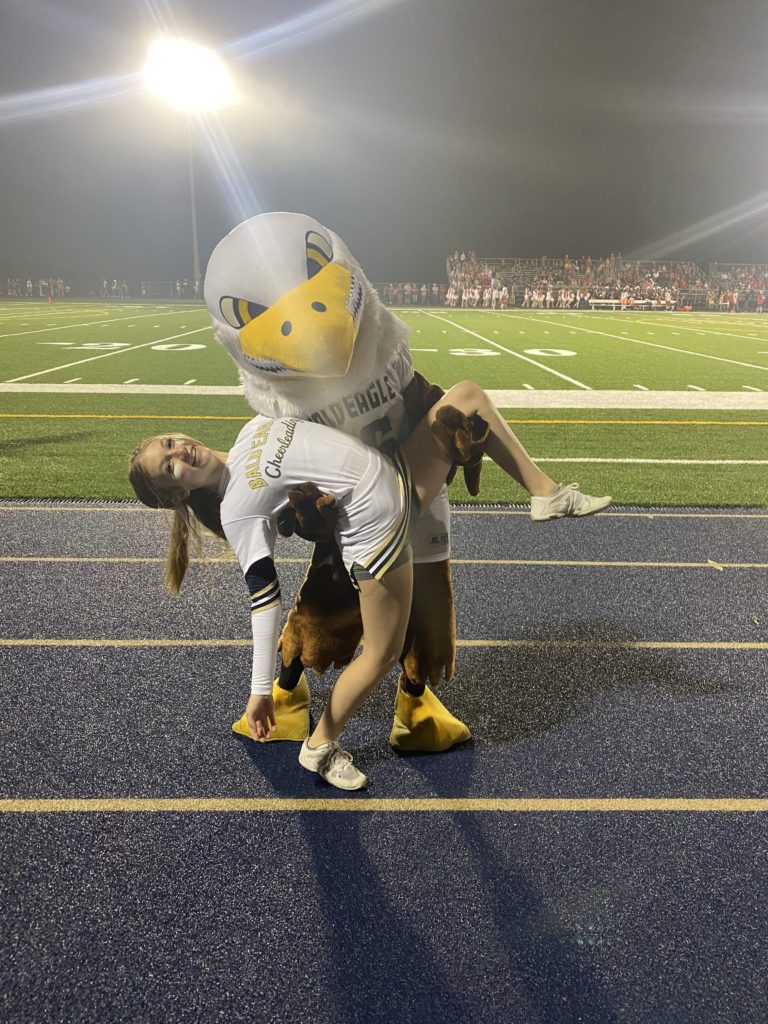
In their submission letter, the students said the school should be named Bald Eagle because of its location “in the Bald Eagle Valley,” an area “teeming with the tradition and lore of the eagle.” The letter went on to say that the name would “go well in connection with sports, and it is a fitting emblem of bravery and courage.”
The current Eagle mascot is nicknamed “Lester,” and is portrayed by different people at each event, according to Harley Yoder, the head cheerleading coach.
“We try to keep it anonymous,” Yoder says. “It’s more fun that way.”
That’s partially so the wearer does not feel embarrassed while acting a little silly, whether dancing with the band or playing pranks on the principal, which is all part of the persona each mascot agrees to take on when portraying Lester.
Yoder says for many years, the Eagle uniform was “a little too realistic.”
“It bordered on creepy, kind of like taxidermy,” she laughs.
New costumes were purchased last year, and now, she says, “It’s more of the quintessential collegiate-looking mascot costume.”
This means it includes the typical giant mask that makes seeing and hearing difficult, so the mascot is guided by an assistant at all times.
Grace Prep Storm
Grace Prep, a faith-based high school in State College, has been using the Storm as its athletic moniker since its founding in 2003.
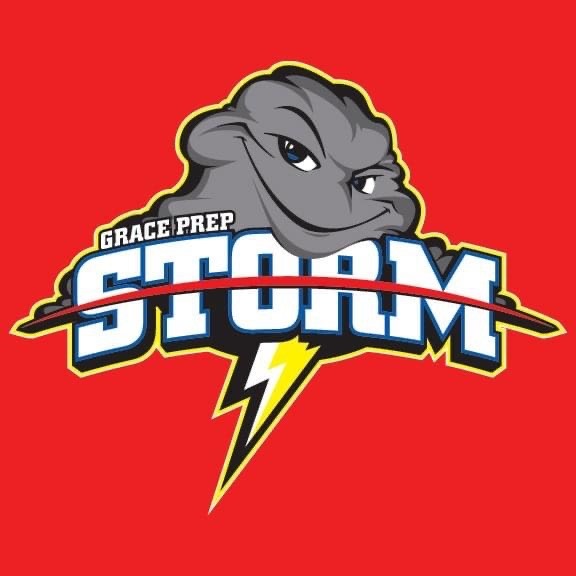
Janet Mylin, Grace Prep marketing and communications director, provided this history of the Storm:
“When we were deciding on a mascot, we wanted one that reflected our faith in God’s ability to do what we cannot. … We came across a story in the Bible about a drought. A literal lack of rain. (It was also a time where integrity and character in people was lacking.) But there was a man who had faith to pray for rain. At one point he said, ‘I see a cloud the size of a man’s hand!’ It was a tiny cloud. But it increased his faith, and that man kept praying for a storm. And it happened! The rains came and the drought ended! We want that for our culture. For the drought of selflessness and lack of character to end. … We are a small cloud in a large world! But we have faith to believe God uses small things to accomplish God-sized tasks.”
Although Grace Prep currently does not have a mascot that appears at games, in their early years the students adopted “Stormie,” a dog belonging to school founders Bob and Dannah Gresh, as their unofficial mascot.
Saint Joseph’s WolfPack
At the newest high school in Centre County, Saint Joseph’s Catholic Academy in Boalsburg, the sports teams compete as the WolfPack.
According to a student handbook, the moniker “was selected by the initial classes of SJCA, the Class of 2014 and the Class of 2015,” in part because, “Wolves are viewed as wise, resourceful, and intelligent creatures. They are brave, strong, and adaptable. They are protective of each other, and they are loyal. They are native to Pennsylvania.”
Junior Max Rossman plays the current mascot, affectionately known as “WolfGang,” at most sporting events, and says he feels like the indoor events, where there are often big crowds in small areas, are where he can make the biggest difference.
“My role is to hype up the crowd and connect the community,” he says. “A big part of what a mascot truly does is, it kind of changes the atmosphere. If your team is losing, the mascot … can get people cheering, and really affect the atmosphere.”
Receive all the latest news and events right to your inbox.
403 S. Allen Street
State College, PA 16801
Phone: 814-238-5051
